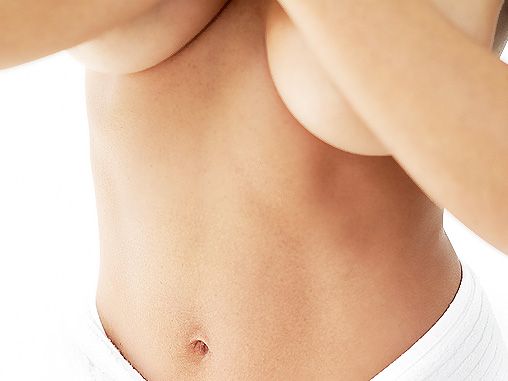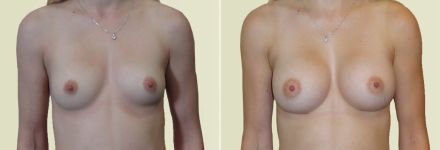Breast enlargement
- Breast enlargement is a surgical procedure aiming at increasing the size of female breasts. It can make your breasts set in better proportion with the rest of your body, even out any differences in their size or shape, enlarge them and help them regain their shape after weight loss, pregnancy, breastfeeding or age. Breast enlargement surgery can also be performed as a reconstruction procedure after mastectomy or in the event of inborn breast anomalies.
- The most suited candidate for breast enlargement surgery is a woman over 18 years of age, who is not satisfied with the size or shape of her breasts and wants to change the way they look. Patients must be mentally stable, in good physical health and realistic in their expectations. Breast enlargement procedure can improve the look of the breasts and - like many other cosmetic surgery procedures - often has an added benefit of increasing the patient's self-confidence.
- Procedure
- Breast enlargement procedure takes from one to three hours and is usually carried out under a general anaesthetic. There are a few possible incision places:
1. in the armpit
2. in the fold under the breast
3. around the nipple.
After the incision is made, breast tissue is lifted to form a pocket where an implant is placed. The implant can be placed in two locations:
1. subglandular - above the greater pectoral muscle
2. submuscular - below the greater pectoral muscle. - The implant is usually a silicone bag filled with saline. In most cases implants are first placed in the breast and only then filled with saline, which allows a smaller incision. Once the implant is inserted the incision is closed. If necessary, it will be additionally secured with a tape and the breast will be dressed afterwards. In some cases might be necessary to place a drainage tube in the incision in order to drain the fluid. it is a standard procedure.
- Breast enlargement surgery comprises various options and techniques. The choice must be made depending on location of the incision and placement of the implant. There is no universal solution for everyone and it is best to decide on the procedure after the consultation with your doctor. Every option has its advantages and disadvantages. An incision under the armpit or under the breast has a lower risk of breastfeeding complications in the future but it leaves a small, yet visible scar. An incision around the nipple leaves a less visible scar but there is a higher risk of breastfeeding complications.
- The implant itself can be placed in a subglandular or submuscular position.
1.1. A subglandular implant is inserted above the greater pectoral muscle. The advantages are: shorter surgery time and recovery period, less pain and easier access if re-operation is needed, but it increases the risk of the implant being palpable and of capsular contracture around the implant. It may also hinder mammography result interpretation.
2.2. A submuscular implant is inserted below the grater pectoral muscle. There is a lower risk of capsule contracture, the implant being palpable and mammography difficulties, however surgery time and recovery period are longer, it is more painful and access in the event of re-operation is more difficult. - Recovery
- For a few days after the surgery patients often feel sore, tired and numb. As the surgery causes tissues to stretch, patients usually experience some pain, especially with submuscular implants. Prescription painkillers will ease the pain and discomfort. For three to five days after the surgery the patient should avoid arm stretching movements.
- A few days after the surgery all dressings are usually removed. The patient should wear a support bra or use a compression bandage, which supports the breasts and helps maintain their position. Drainage tubes, if applicable, are usually removed within one or two days after the surgery. The stitches are removed seven to ten days after the surgery. At the beginning when you skin adjusts to the new breast size, your breasts may feel firm and swollen, but once they have settled they will soften. Swelling is quite common and it begins to subside within a few weeks. Increased tenderness will subside after a month or longer. For the first few weeks after the surgery the scars will be pink, but they will turn white within several months. Recovery time varies depending on the patient and the technique. You can return to work after 6 - 14 days, but you are advised to refrain from strenuous activities for a few weeks.
- Risk and complications
- Every surgery carries some risk. In order to minimise any possible risk of complications, you must provide the surgeon with all details relating to your health, especially if you smoke, are on medication or have undergone a surgery in or around the area which is to be operated upon. You can minimise the risk significantly by choosing a well-qualified and experienced plastic surgeon and by strictly following their advice before and after the surgery. Although currently all plastic surgery procedures are very safe, your surgeon will discuss any possible, although unlikely, complications in connection with your treatment.







